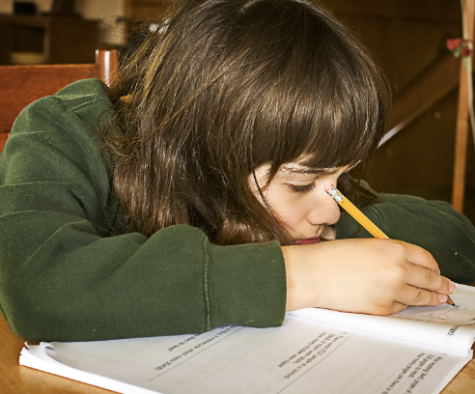“Going paperless” receives mostly negative opinions from students

Brookfield Central is just one of hundreds of schools nationwide that are making major efforts to go paperless. Every single student within these walls has a Chromebook this year, paving the way for increased usage of online textbooks and digital assignments. It is a huge change, creating divided opinions on how effective and convenient going digital is.
On one hand, students have fewer things to carry, since many classes are switching to online textbooks. Over 70% of BC students surveyed noted this! Technology is a good way to get organized and to study, with 25.8% and 29.0% of students mentioning this, respectively. Kids also now enjoy new learning tools, such as Kahoot, a surprisingly good way to review material through competition, and Desmos, an online graphing calculator. Meanwhile, schools save money on paper, ink, and mail stamps in the long run, and get to pat themselves on the back for being more environmentally friendly.
However, there are many negative aspects of going paperless. According to the American Academy of Pediatrics (AAP), students are often looking screens for seven hours a day. Devices are used in class and at home for homework, as well as for recreational media, leading to 51.6% of students reporting itching, burning, or aching eyes. Additionally, 45.2% of kids reported more frequent headaches.
Moreover, learning through technology might not actually be better. It’s common knowledge that writing notes by hand leads to better long-term comprehension than typing does. Researchers like Pan A. Mueller of Princeton University continue to publish research articles extolling the benefits of handwriting. Nearly 1 in 4 surveyed students actually mentioned that they were learning better by writing than typing when asked if they had any more comments about being digital.
A more pronounced negative effect that going digital has on learning is the increase in distractions. You can always put your phone in the next room or turn it off if you need to stay on task, but when your homework is online, what do you do? It’s never been easier to procrastinate, which has been noted by 58.1% of surveyed students. That is, though, when the Wi-Fi is working. Complaints about Wi-Fi speed and general “crappiness” were also common in the survey answers.
Yet, the final nail in the digital coffin is that going paperless is not actually that good for the environment. Manufacturing laptops, iPads, and other common learning devices in schools takes an immense amount of energy and a good helping of rare and toxic materials. There’s a reason why you can’t just toss your phone in the normal trash when you need to replace it. More astonishing is how companies are able to power so many devices. According to the US Energy Information Administration (EIA), 67% of American electricity is from fossil fuels, and 33% of which is from coal. To get coal, companies often do what’s known as mountaintop removal – land above a coal seam is simply removed and pushed into valleys. The process disrupts rivers, destroys forests, fills entire valleys, disturbs animals, and even affects human towns that are near mining sites. Paper gets a bad rap for being environmentally harmful, but it’s clear that neither medium is innocent.
The transition from paper to digital programs is significant. For students who grew up learning on paper, these changes may be inconvenient or annoying, but younger generations seem to be used to it. Once kids who are used to learning with technology get to high school, complaints will likely be less common. For now, though, as Laurel Chen (‘18) so eloquently put it, “it sucks.”
Anonymous comments on the topic ranged from, “I WANT PAPER,” to “It’s gross,” to just a simple “I don’t like it.” One student wrote, half-jokingly, “I WANT MY BIOLOGY TEXTBOOK (PAPER!!)”









